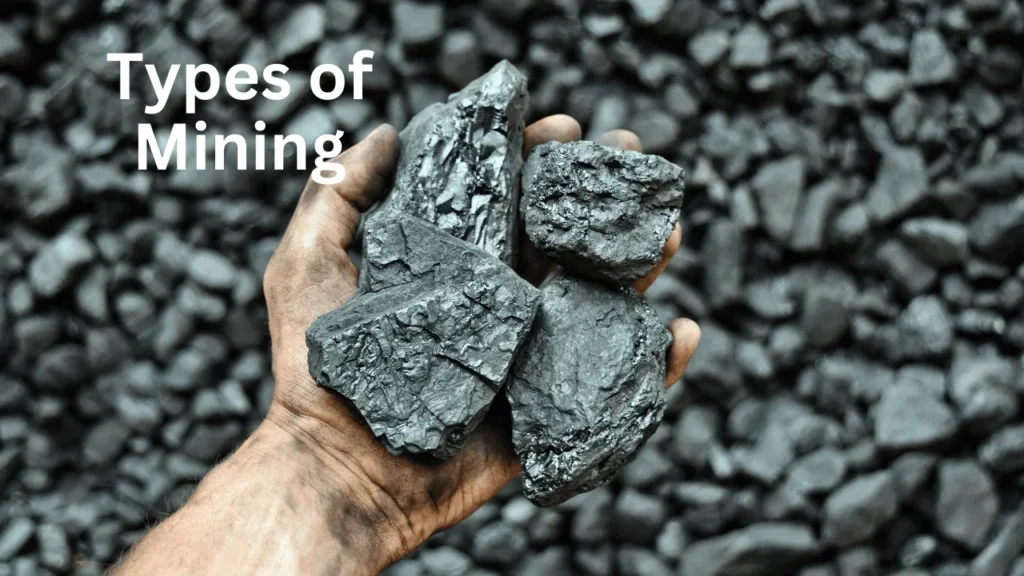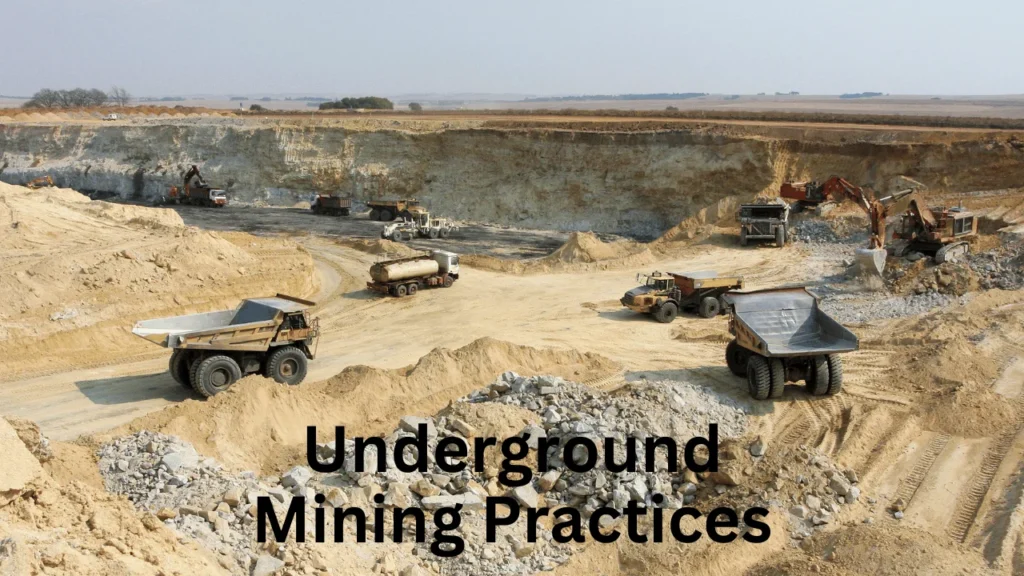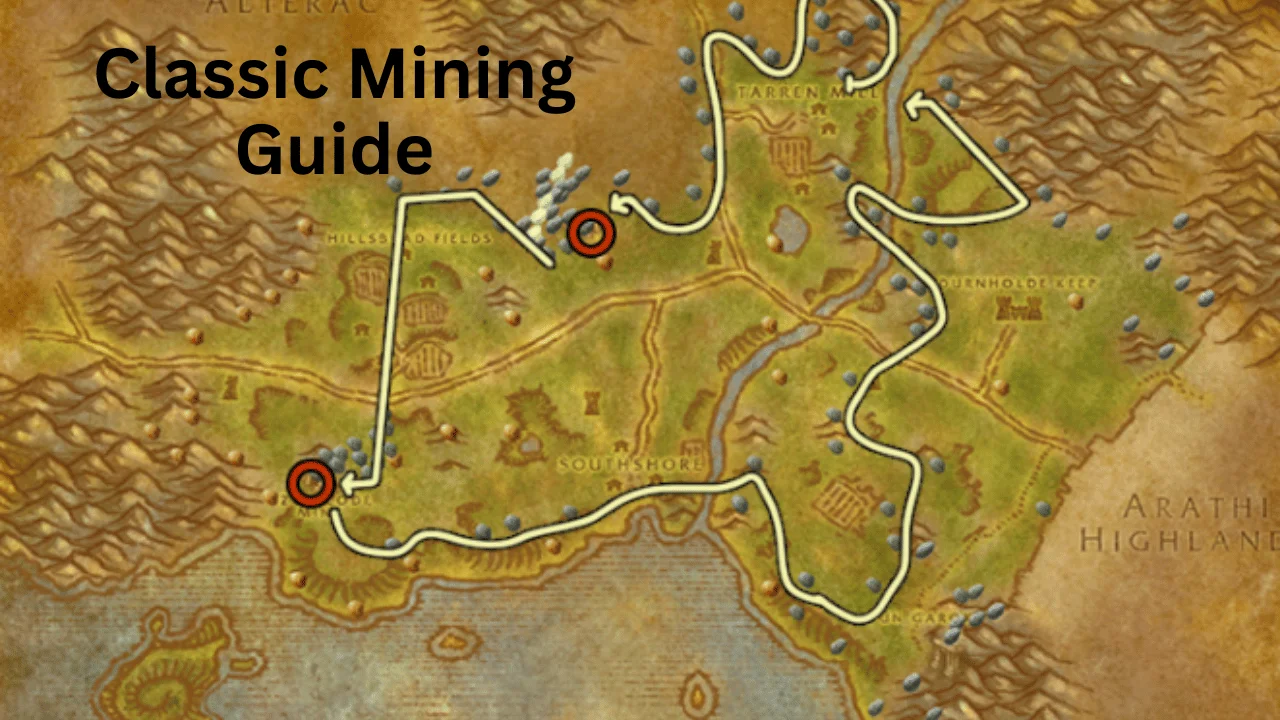Metals, minerals, and fuel are essential for human civilizations, and mining has been an important part of human history since prehistoric times. For a comprehensive look at time-tested mining techniques, equipment, and procedures that have stood the test of time, nothing beats a classic mining guide. This article provides a comprehensive overview of classic mining by diving into its essential components.
Understanding the Basics of Mining
Mines use a wide variety of techniques and methods that are specific to the resources they are extracting and the geological conditions in which they are located. More complex mining processes have their origins in these rudimentary ideas, which we will examine here.
Types of Mining

Surface Mining
Removing the top layer of rock and dirt from a site where minerals may be found is known as surface mining. The extraction of minerals close to the surface of the earth is the usual application of this method. Methods such as quarrying, open-pit mining, and strip mining are commonly used.
Underground Mining
Deeply buried mineral deposits can be reached through underground mining, which entails the excavation of tunnels or shafts. When surface mining is not an option, this technique is crucial for reaching the valuable resources below. Underground mining frequently employs techniques like room and pillar, longwall, and block caving.
Geological Survey for Mining
Every mining operation begins with a geological survey. Exploration for mineral deposits is mapped out by first charting the area’s geological features. Remote sensing, seismic surveys, sampling, and other methods are utilized by geologists to collect important data.
Mining Site Evaluation
To ascertain the financial feasibility of a mining site, an evaluation is essential. Thorough examination of geological records, EIAs, and feasibility studies are all part of this procedure. Effective and efficient mining operations can be planned with the help of a thorough site evaluation.
Mining Safety Protocols
In mining operations, safety is of the utmost importance. To protect miners and reduce the likelihood of accidents, thorough safety protocols must be put into place. Among these procedures are the use of PPE, routine equipment maintenance, and safety drills.
Surface Mining Methods
Various methods are employed in surface mining to extract minerals near the surface of the earth. The efficiency and complexity of these methods are affected by the geological conditions and the type of mineral.
Open-Pit Mining
In order to extract minerals, open-pit mining requires digging a big pit. Minerals such as gold, iron, and copper can be efficiently mined using this technique. First, the vegetation and topsoil are removed from the surface. Then, the ore is transported after drilling and blasting.
Strip Mining
Coal and lignite are the most common materials extracted using strip mining. To access the mineral seam, extensive sections of soil and rock must be removed. Though very efficient, this method, if not handled correctly, can have serious consequences for the environment.
Quarrying
Building materials such as stone, gravel, and sand are extracted through quarrying. Big stones or blocks of stone are extracted from a quarry using this technique. After extraction, the materials are ground or chopped into the appropriate sizes and shapes for building.
Mountaintop Removal
In the contentious practice of mountaintop removal, surface miners blast away mountaintops in order to reach coal seams below. Destroying habitats and polluting water sources are just two of the many negative environmental effects of this method.
Dredging
Dredging is the process of removing materials from submerged deposits, most commonly located in riverbeds or along coastlines. The process involves using specialized machinery to collect sediments that contain valuable minerals. These sediments are subsequently processed to extract the resources that were sought after.
Underground Mining Practices

For minerals deep within the earth to be accessed, underground mining is a must. To guarantee safety and efficiency, this method necessitates the use of advanced techniques and equipment.
Room and Pillar Mining
Using pillars of unmined material to support the roof, room and pillar mining entails excavating a series of rooms. Coal, gypsum, and salt are among the most typical materials mined using this technique. Extraction of resources is maximized while stability is maintained by meticulously planning the layout of rooms and pillars.
Longwall Mining
An extremely efficient method, longwall mining involves cutting a single slice across a lengthy wall of coal. This process involves cutting the coal with mechanical shearers and then sending the pieces to the surface on conveyor belts. The high productivity of longwall mining makes it a popular choice for coal mining.
Block Caving
The large-scale underground mining method known as block caving is employed to extract low-grade ore bodies. To use this technique, one must first dig a hole so deep that an ore body can’t support itself. The next step is to gather the broken ore and send it to the processing facility.
Cut and Fill Mining
Ore bodies with a steep dip require cut and fill mining. To use this technique, a hole is cut into the ore body and then filled with tailings or waste rock. This method’s capacity to regulate ground stability and reduce dilution makes it a useful tool.
Shrinkage Stoping
When working with narrow ore bodies, shrinkage stopping is a common mining technique. The stope is a place where broken ore accumulates after miners cut horizontal slices in the ore body. In order to make room for additional extraction, the built-up ore is periodically removed.
Mining Tools and Equipment
From simple hand tools to complex machinery, mining demands a wide array of equipment. Efficient mining operations require a thorough understanding of how to use and maintain these tools correctly.
Basic Mining Tools
Pickaxes and Shovels
The simplest tools utilized in mining are shovels and pickaxes. When working with rock and soil, they are indispensable. These tools are essential for small-scale mining operations, even though they are simple.
Hammers and Chisels
Breaking rocks and removing mineral samples requires the use of hammers and chisels. Geological surveys and testing of samples benefit greatly from their utilization.
Sledgehammers
Smashing big rocks into smaller, easier-to-handle chunks is the job of sledgehammers. Because of the force they supply, even the hardest rocks can be cracked with their smaller counterparts.
Advanced Mining Machinery
Drills
In order to blast or sample rock and soil, drills are utilized. Different drills are better suited to different jobs and environments; for example, big rotary drills and small hand-held pneumatic drills are two examples.
Conveyor Belts
The materials that are mined are moved to the processing plants by means of conveyor belts. When it comes to large-scale mining operations, they are crucial for efficient material handling.
Excavators
When digging or moving big amounts of dirt or rock, heavy-duty machines called excavators are essential. Their adaptability to both surface and underground mining is a result of the wide range of sizes and configurations available.
Loaders
To transfer extracted minerals from a quarry to waiting trucks or conveyor belts, miners employ loaders. When it comes to efficiently transporting big amounts of material, they are indispensable.
Rock Crushers
A rock crusher can reduce the size of a rock from its natural state to a more manageable fraction. They facilitate transportation and refining of mined materials, which is a crucial step in their processing.
Safety in Mining Operations
In mining, safety is of the utmost importance. The likelihood of accidents and injuries can be drastically decreased with the help of well-designed safety procedures and adequate training.
Hazard Prevention
Regular Safety Drills
Miners can better prepare for any emergency by practicing their response during frequent safety drills. Caving in, equipment failure, and fire scenarios should all be covered in these drills.
Equipment Maintenance
To keep mining accidents to a minimum, it is essential that equipment be properly maintained. You can catch problems before they become big by doing inspections regularly and fixing them when they break.
Hazard Identification
Mining operations involve a continuous process of identifying and mitigating hazards. Site inspections, risk assessments, and the introduction of countermeasures to those risks should be part of this process on a regular basis.
Emergency Response in Mining
Emergency Plans
In order to handle accidents and emergencies that may arise during mining operations, it is crucial to have a thorough emergency response plan. Detailed protocols for medical response, communication, and evacuation should be part of this plan.
Rescue Teams
The ability of rescue teams to respond to emergencies depends on their specialized training and the equipment they possess. To make sure these teams can respond quickly and effectively, they should be trained and practiced often.
First Aid Training
To make sure that miners can get medical help quickly in the event of an injury, first aid training is a must. In cases when expert medical assistance is delayed, this knowledge can prove to be a lifesaver.
Environmental Impact of Mining
There are substantial effects on the environment caused by mining. Reducing these impacts and encouraging responsible mining can be achieved through the implementation of sustainable practices and mitigation strategies.
Sustainable Mining Practices
Reclamation Efforts
Land that has been mined can be “reclaimed” by returning it to its original condition or finding new uses for it. Soil stabilization, replanting, and ecosystem rehabilitation are all part of this process.
Waste Management
Reducing mining’s negative effects on the environment requires careful handling of waste materials like tailings and overburden. Properly treating polluted water and disposing of waste are part of this process.
Energy Efficiency
Greenhouse gas emissions and operating expenses can be mitigated through more efficient use of energy in mining processes. Among these measures are the adoption of renewable energy sources and the use of energy-efficient machinery.
Water Conservation
Large quantities of water are frequently needed for mining operations. Lessening the demand on regional water supplies is one goal of water conservation initiatives like water recycling and reuse.
Biodiversity Protection
In order to preserve biodiversity, it is necessary to lessen the effect that mining has on nearby ecosystems. Preserving habitats, staying away from sensitive areas, and taking action to protect wildlife are all part of this.
FAQs
What are traditional mining techniques?
Traditional mining techniques include surface mining methods like open-pit and strip mining, as well as underground methods like room and pillar and longwall mining. These techniques have been developed and refined over centuries to extract minerals efficiently and safely.
How to use basic mining tools effectively?
Using basic mining tools effectively requires proper training and technique. For example, pickaxes and shovels should be used with the right amount of force and angle to break and move rock efficiently, while hammers and chisels should be used to carefully extract mineral samples without causing damage.
What equipment is needed for underground mining?
Underground mining requires specialized equipment, including drills, loaders, conveyor belts, and rock crushers. Each piece of equipment has a specific role in the mining process, from creating tunnels to transporting and processing extracted materials.
How to conduct a geological survey for mining?
Conducting a geological survey involves mapping geological features, collecting and analyzing rock samples, and using tools like remote sensing and seismic surveys. This helps identify potential mineral deposits and determine the feasibility of mining in a given area.
What are the best practices for surface mining?
Best practices for surface mining include proper site evaluation, implementing safety protocols, using appropriate equipment, and minimizing environmental impact. This involves regular inspections, effective waste management, and reclamation efforts to restore mined land.
Also Check: SP Mining: Global Market Intelligence
Conclusion
In order to efficiently extract resources, a classic mining guide will give a thorough review of traditional mining methods, equipment, and best practices. Because they form the basis for more sophisticated and contemporary practices, these basics are vital for everyone working in the mining sector to understand. Miners can ensure the continued availability of essential resources for future generations by conducting successful and sustainable operations while emphasizing safety, environmental responsibility, and efficient techniques.

Brandy Stewart, an enchanting wordsmith and seasoned blogger, weaves compelling narratives that transport readers to uncharted territories. Infused with perceptive viewpoints and dynamic storytelling, Doris exhibits a command of language that enthralls both hearts and minds, leaving a lasting mark on the literary panorama.

